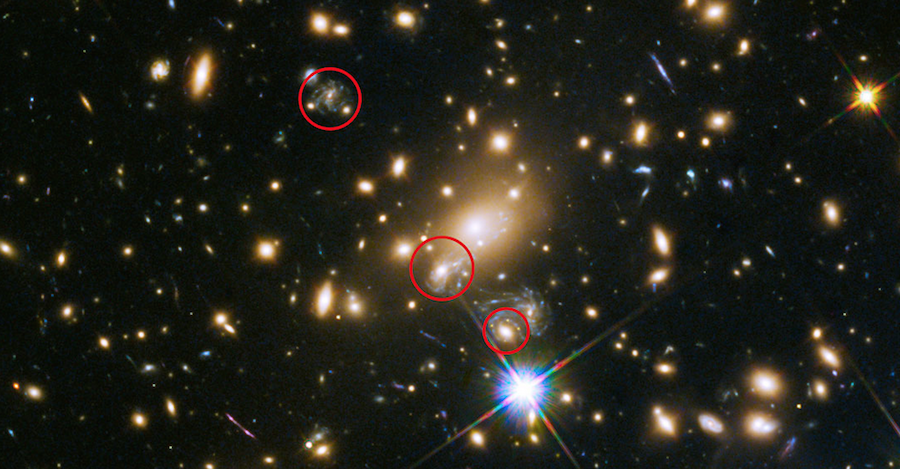Once-in-a-lifetime opportunity to predict a supernova

Astronomers have used the Multi Unit Spectroscopic Explorer (MUSE), attached to ESO’s Very Large Telescope (VLT) at the Paranal Observatory, to take advantage of a once-in-a-lifetime opportunity to test their understanding of massive clusters of galaxies. They are making the first ever prediction of an observational event in the distant Universe before it actually becomes visible.
This extraordinary lensing event, in particular the time delay of the next multiple image of the supernova, will provide unprecedented inform- ation on the mass composition of a galaxy cluster and possibly on the cosmic expansion rate.
— Claudio Grillo
Dark Cosmology Centre
Using all the available MUSE data, in combination with Hubble observations, a team of astronomers led by Associate Professor Claudio Grillo (Dark Cosmology Centre) have predicted that a further replay will peak in brightness between March and June 2016, with a possible first detection before the end of 2015. They can also anticipate not only where and when the supernova is expected to become visible again, but also approximately how bright it will appear.
Images of the galaxy cluster MACS J1149+2223, taken by the NASA/ESA Hubble Space Telescope in November 2014, revealed a distant exploding star — a supernova — like no other ever seen. Called Refsdal, it is the first supernova to be split into four separate images through the process of gravitational lensing, forming an almost perfect Einstein Cross around one of the cluster’s galaxies.
Gravitational lensing is a consequence of Einstein’s theory of general relativity. The paper stating the equations of this fundamental change in our understanding of gravity was published on 25 November 1915, exactly one century ago.
Hubble is now being periodically pointed at the cluster in hopes of catching the once-in-a-lifetime event, putting the astronomers’ models to the ultimate test in the process.
Links
- Science paper (Grillo et al)
- Related science paper (Treu et al)
- Link to story on Hubble Space Telescope web pages
- Link to story on ESO web pages
Photo above
Info: This NASA/ESA Hubble Space Telescope image shows the positions of the past, present and predicted future appearances of the Refsdal supernova behind the galaxy cluster MACS J1149+2223. The uppermost circle shows the position of the supernova as it could have been seen in 1995 (but was not actually observed). The lowermost circle shows the galaxy which lensed the Refsdal Supernova to produce four images — a discovery made in late 2014. The middle circle shows the predicted position of the reappearing supernova in late 2015 or early 2016.Credit: NASA, ESA, S. Rodney (John Hopkins University, USA) and the FrontierSN team; T. Treu (University of California Los Angeles, USA), P. Kelly (University of California Berkeley, USA) and the GLASS team; J. Lotz (STScI) and the Frontier Fields team;
M. Postman (STScI) and the CLASH team; and Z. Levay (STScI)
